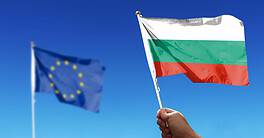World economic growth is increasingly driven by Brazil, Russia, China and India.
BRICs are back. The countries comprising one of the most ubiquitous acronyms in the financial markets—Brazil, Russia, India and China—have turned a corner economically, according to a recent report, although the outlook for is far from uniform. Oxford Economics says its Financial Conditions Indices (FCIs), which measure asset prices, foreign exchange, money, credit, interest rates and spreads, place the BRICs firmly in positive territory. New data suggests advanced economies will be supported by BRIC economies’ reemergence from a financial winter.
The four big developing economies will reach a third of the world’s GDP this year—33.28%, to be precise—measured by purchasing power parity (PPP), so that their “turn of financial conditions from overall negative to supportive will provide support for the global economy,” says Tamara Basic Vasiljev, senior economist at Oxford Economics. Broadly, Brazil is firmly in positive territory, Oxford calculates, while Russia is close, and India and China are trending up from end-of-year lows, with their FCIs correlating to some leading indicators of GDP growth.
At the country level, the picture is nuanced. Brazil enjoyed a recovery in equity and real-estate markets in the second half of 2018, which is providing a boost to the economy. But mixed signals in January are increasing pressure on the Central Bank of Brazil to cut interest rates.
Russia’s risk indicators remain elevated, with 10-year government bond yields creeping higher while interbank spreads and the Emerging Market Bond Index are plodding along. Still, Russia’s FCI displays a leading indicator for GDP, which should provide tailwinds for growth.
In India, the Reserve Bank has reversed course and begun easing monetary policy, with a cut in the repo rate in February and another in the cards. That should alter the FCI’s downward trend, and financial conditions should support growth in the first half of 2019.
China’s better-than expected first-quarter growth figures have stoked optimism about the world’s second-largest economy. Further monetary-policy easing could trigger a reversal in interest rates and spreads, boosting growth, Oxford says.



